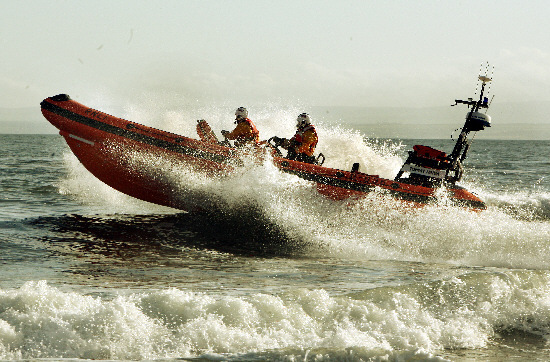Kinghorn’s lifeboat crew has just come through one of the most traumatic years in its history.
Despite a quieter than average 12 months with only 45 call-outs, the Fife volunteers had to cope with four deaths in the Firth of Forth in 2011. Among those was the drowning of three-year-old Eryk Cieraszewski, who was swept into the sea off Kirkcaldy by a freak wave in November.
Two divers died in separate incidents in Levenmouth earlier in the year, and a kayaker lost his life off Leith after getting into difficulties.
Those kind of tragedies are rare and most years the crew do not have to deal with any. And the tough times have been tempered with some notable rescues and many lives have been saved thanks to the brave men and women who risk their lives to save others.
These include the miraculous rescue of a 10-year-old boy off the coast of Leven after he and a friend fell off a rubber dinghy. One of the youngsters made it back to shore but the other disappeared in the water and the Kinghorn team feared the worst when they arrived on the scene, only to spot him bobbing yards from the empty dinghy. He was hauled into the boat, freezing but safe.
The elation when months of rigorous training helps them pull terrified members of the public from the sea is shared by the entire crew, who also support each other after the more distressing incidents.
Lifeboat operations manager Paul Wibberly summed up the feeling, stating: ”The Leven rescue was a miracle. That’s what you’ve done all your hours and hours of training for to extend that hand to somebody on their last legs and to save that person’s life.”
Helmsman Neil Chalmers added: ”It’s been a very quiet year but it’s been one of the toughest.”
However, he too had a positive story to tell after being involved in a call-out to a small chemical tanker on the Forth where a merchant seaman was drifting in and out of consciousness.
”The tanker’s personnel thought he had food poisoning and we went out to assist him with first aid before bringing him back to shore to a waiting ambulance,” he said. ”He was a 23-year-old Dutch national and it turned out he had had a brain haemorrhage. It didn’t look as though he was going to make it and his family was flown over to be by his side, but he had an operation and went on to make a full recovery.”
Another potential disaster was averted by the team in September when three ill-equipped kayakers were rescued at Portobello.
”They were beginners, they didn’t have the right equipment and they ended up in the water,” said Neil. ”It was windy that day and rough going across but we managed to get the three of them out of the water. That was a good rescue.”
Despite being trained to professional standards, RNLI crew members are almost all unpaid volunteers and most of them have day jobs. The Kinghorn crew includes a pensions adviser, police officers, IT support workers, call centre workers, shop workers, housewives and students. They spend one week in every four on call and, on average, the boat is launched within seven minutes of receiving a shout.
It is the decision of the helmsman which crew members to take, depending on their individual skills, and if conditions are deemed too dangerous, he or she can refuse to launch at all. ”We get a request from the coastguard but we are under no obligation to launch,” said Paul. ”But 99.9% of the time the boat will launch and we will never not launch for somebody in distress.”
The dangers of the job were highlighted in 2007 when crew member Alistair McLean suffered a horrific head injury when he was hit by a propellor during a training exercise. Part of his skull had to be removed by surgeons and although he has made a good recovery, he has not returned to the boat.
Nonetheless, the crew are determined to continue their efforts and have called on the people of Fife to help with the fundraising which, quite literally, keeps them afloat. Last year Kinghorn’s fundraising committee raised £38,000 through a number of events, as well as an anonymous bequest of £13,000. The RNLI receives no government funding and relies solely on fundraising and donations.
